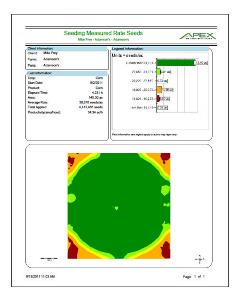Mega Menu
Mega menu is possible in BS5 but we will need to create a custom template layout for the navigation widget. The following is a hard-coded example.

Font Awesome 6
FA6+ icons will work on all widgets.
The FMH Icon box will need a new version created because the styling is broken in Bootstrap 5 templates (this has nothing to do with FA).
FMH Icon Widget
Icons can now be used in Content blocks by pasting the HTML tags from www.fontawesome.com into the HTML editor.
Here are some new icons from Font Awesome 6
face-awesome
envelopes
wheat-awn
Bootstrap Components
Code snippits from http://getbootstrap.com pasted into Content Blocks.
h1. Bootstrap heading
h2. Bootstrap heading
h3. Bootstrap heading
h4. Bootstrap heading
h5. Bootstrap heading
h6. Bootstrap heading
Nav Tabs
Nav Pills
Accordion
.accordion-body, though the transition does limit overflow.
.accordion-body, though the transition does limit overflow.
.accordion-body, though the transition does limit overflow.
Tables
| # | First | Last | Handle |
|---|---|---|---|
| 1 | Mark | Otto | @mdo |
| 2 | Jacob | Thornton | @fat |
| 3 | Larry the Bird | ||
Alerts
Image Carousel
Modals
Sitefinity Widgets
Default, out of the box, Bootstrap 5 templates available for widgets.
The navigation template used above is called Horizontal.
Navigation Widget - Tabs Template
Navigation Widget - Pills Template
Breadcrumb


List Widget - Expandable List Template
Precision Claims FAQs
List Widget - Simple List Template
Crop Claims Reminders
-
How To Report MPCI Claims
-
MPCI Claim Reporting Deadlines
-
Appraisals
-
Production Records by Unit
-
Production Delivered to a Commercial Elevator
-
Production From Precision Farming Technology Systems
-
Production Weighed and Farm Stored
-
Authorization for Load Records, Storage Structure Marking, or Combine Monitor Records
-
Fed Production
-
Quality Adjustment
-
What is a Simplified Claim?
-
What can insureds do to expedite the claim process?
List Widget - Anchor List Template
Quality Control Review FAQ
- What can an Insured do to prepare for a review?
- What can Agents do to prepare for a review?
- How does the review process begin?
Quality Control Review FAQ
What can an Insured do to prepare for a review?
Third party documentation (i.e. summary/settlement sheets from the elevator) is required when applicable and available. Insureds are expected to have available hard copy records that will 1) support the total production raised for the crop/county/year being reviewed and 2) that can demonstrate how production was kept separate between various units, practices and types (if applicable).
Insureds will also want make themselves available to meet with the quality control reviewer as the reviews will need to be completed before the claims can be processed.
What can Agents do to prepare for a review?
How does the review process begin?
Documents List - Documents List Template
Documents List - Documents List Template
| Title | Type | Size | |
| 602 KB | DownloadFMHQ Release 2 Guide | ||
| 405 KB | DownloadWFRP Checklist for Agents 2026 | ||
| 504 KB | DownloadWFRP Policy Provisions 2026 | ||
| 3231 KB | DownloadWFRP Handbook 2026 | ||
| 203 KB | DownloadECO_MCO_SCO_Coverage Comparison Flyer |
News Widget - News List Template
News list template is the only template available by default.
Agency Benefits from Precision Solutions
 Agents Shelly Pfisterer and Jeana Harms, with Agri-Risk Solutions in Gering, NE, are in their third year of offering FMH Precision Solutions. They continue to promote Automated Crop Reporting (ACR) as an effective and accurate way to report acres because it has not only been incredibly successful for their customers, they have found that it brings value to their business.
Agents Shelly Pfisterer and Jeana Harms, with Agri-Risk Solutions in Gering, NE, are in their third year of offering FMH Precision Solutions. They continue to promote Automated Crop Reporting (ACR) as an effective and accurate way to report acres because it has not only been incredibly successful for their customers, they have found that it brings value to their business.
“The customers of Agri-Risk Solutions love this option as it is a quicker and more efficient way to report planted acres,” said Pfisterer. “ACR benefits our agency because we are able to have more precise data. We are able to get the insured’s data instantly, and we are able to process replant claims and early loss claims much more efficiently.”
Through ACR, FMH agents can receive data electronically from their insured as soon as they are done planting, which means their policy is more up to date and accurate should disaster strike.
“Last year, we had an insured that lost a sugar beet field three days after the final plant date. Since we reported via ACR, the claim was worked and paid within 10 days. In the past this would have taken over 45 days,” explained Harms. “The insured had not even reported acres to FSA as they were busy finishing planting corn and dry beans. This claim was paid the first of June, where in a normal situation it wouldn’t have been able to be paid until the 578 was available – which would have been closer to July 15 as that is the deadline to report to FSA. In this situation, the insured was able to receive his indemnity payment around 45 days earlier.”
From ACR for acreage and production reporting, to Precision Claims that can also aid in simplifying the APH Review process, the two agents – who also happen to be twin sisters – encourage their customers to use Precision Solutions whenever possible.
“Precision Solutions are valuable to our business as we strive to be innovative and provide the newest technology to our customers. It has enabled us to offer something that not every agency does, and we feel this allows us a great opportunity to help our customers grow and succeed,” said Pfisterer.
“Precision Solutions have also helped us attract customers as we are among the few agents in our area using this process,” added Harms. “It is a reason to get our foot in the door with new customers to at least discuss the process.”
From the beginning, FMH has remained committed as Agri-Risk Solutions’ partner in Precision Solutions. Through members of the FMH Precision Team, their agency has received guidance and training every step of the way.
“Our Precision Technology Specialist, Branden, is one of the most valuable assets to our business. We are able have our questions answered immediately, and he helps us solve problems and will meet with our customers whenever we need,” noted Pfisterer.
Precision Solutions bring efficiency, speed, and data accuracy to multiple crop insurance processes, including reporting, claims, and APH reviews. Automated Crop Reporting (ACR) is the process of using precision ag data for electronic acreage and production reporting. Agents and insureds can still use ACR to report acreage this year, even if it is their first time using this process. Learn more.
Blog Posts Widget - Blog Posts Lists Template
-
Reporting Acreage with FMH Precision Solutions
Many policyholders already collect precision ag data during planting. Put that data to work to report acreage for crop insurance with FMH Precision Solutions.Full story -
Prepping Your Customers for Planting with Precision
Help your farmers use the precision data they're already collecting to simplify planting and reporting this spring.Full story -
Q&A with an FMH Precision Tech Specialist
Learn how our expert staff supports agents getting started with Precision SolutionsFull story -
Traditional vs. Precision Claims: What Are the Differences?
Oct 16, 2023, 14:01 by Eric RicheLearn how Precision Solutions can lead to simplified claims and easier APH reviews for your customers.Full story -
See How Precision Solutions Saves Premium and Improves APH
See the difference with examples from our recent FieldView™ Partner Connect webinar.Full story



